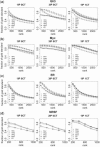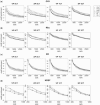TileProbe: modeling tiling array probe effects using publicly available data
- PMID: 19592393
- PMCID: PMC2735670
- DOI: 10.1093/bioinformatics/btp425
TileProbe: modeling tiling array probe effects using publicly available data
Abstract
Motivation: Individual probes on an Affymetrix tiling array usually behave differently. Modeling and removing these probe effects are critical for detecting signals from the array data. Current data processing techniques either require control samples or use probe sequences to model probe-specific variability, such as with MAT. Although the MAT approach can be applied without control samples, residual probe effects continue to distort the true biological signals.
Results: We propose TileProbe, a new technique that builds upon the MAT algorithm by incorporating publicly available data sets to remove tiling array probe effects. By using a large number of these readily available arrays, TileProbe robustly models the residual probe effects that MAT model cannot explain. When applied to analyzing ChIP-chip data, TileProbe performs consistently better than MAT across a variety of analytical conditions. This shows that TileProbe resolves the issue of probe-specific effects more completely.
Availability: http://www.biostat.jhsph.edu/ approximately hji/cisgenome/index_files/tileprobe.htm.
Figures




References
-
- Bernstein BE, et al. A bivalent chromatin structure marks key developmental genes in embryonic stem cells. Cell. 2006;125:315–326. - PubMed
-
- Bertone P, et al. Global identification of human transcribed sequences with genome tiling arrays. Science. 2004;306:2242–2246. - PubMed
-
- Bolstad BM, et al. A comparison of normalization methods for high density oligonucleotide array data based on variance and bias. Bioinformatics. 2003;19:185–193. - PubMed
-
- Carroll JS, et al. Chromosome-wide mapping of estrogen receptor binding reveals long-range regulation requiring the forkhead protein FoxA1. Cell. 2005;122:33–43. - PubMed

